Lush and full, the ranunculus really knows how to make an entrance. Blooming in a range of colours from blushing peach to wine red, the large clusters of tissue-thin petals are a cheery addition to any garden. Grow your own ranunculus flowers to add texture to bouquets, as a centerpiece for a container, or to simply enjoy while sitting in the backyard.
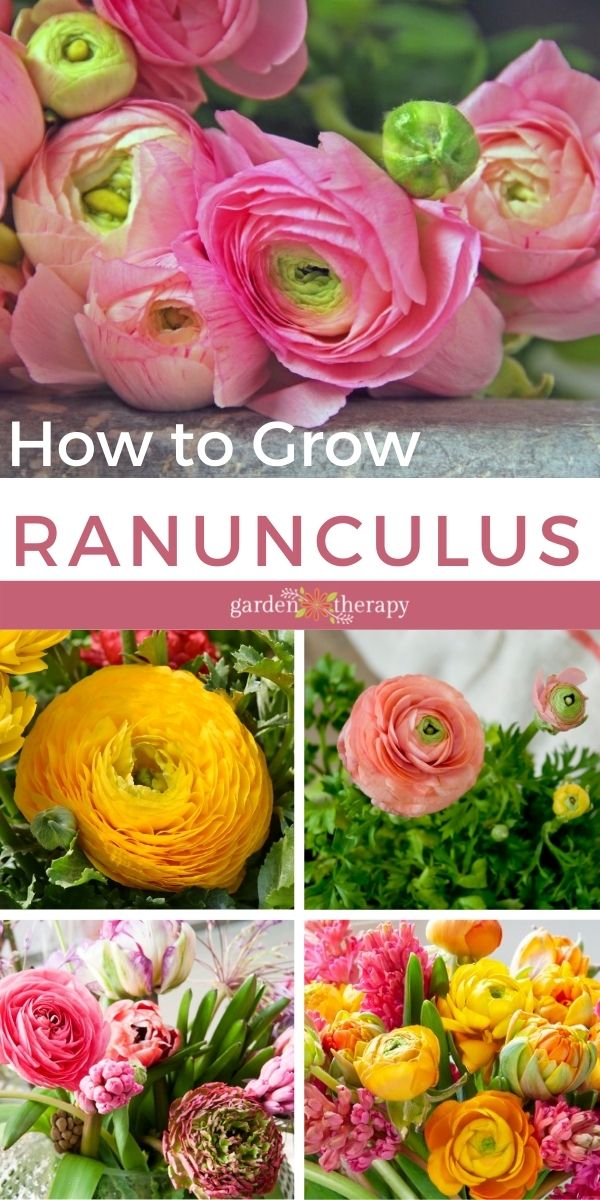
In the spring, I always see a whole aisle at the garden centre dedicated to ranunculus flowers. And they are a florist staple in spring flower arrangements. I was surprised to find out that many folks don’t know is that you can grow them in your garden from corms. I don’t know why they aren’t a home garden staple as they are very popular and have a strong fan base.
Me, I’ll always be one of the ranunculus flowers’ biggest cheerleaders! They are so easy to grow and belong in more home gardens. Here’s everything you need to know about how to plant ranunculus corms and care for their blooms.
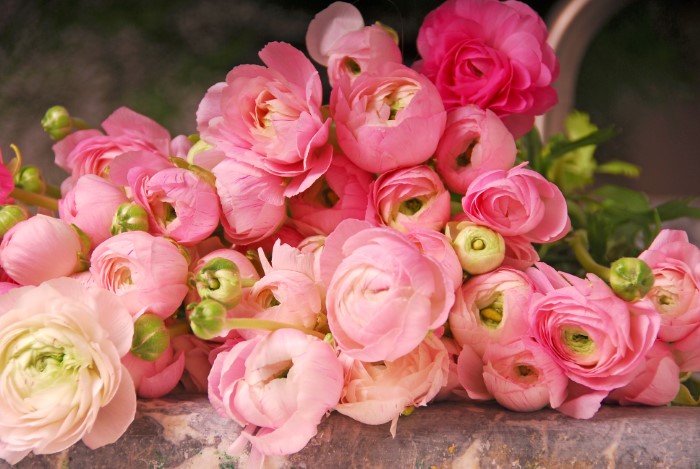
Meet the Ranunculus
Also known as the Persian Buttercup, the Ranunculus asiaticus is the most common ranunculus found in home gardens. There are over 250 species, but most are found only in the wild. All hybrids found in the home come from the Ranunculus asiaticus.
Tecolote hybrids, known as peony-flowered, come from California and are easy to source. Other hybrids also include varieties from Israel and France.
No matter which type of ranunculus you choose, you are bound to find them in all sorts of colours. Typically flowering in late spring and early summer, you can find ranunculus in white, yellow, pink, orange, red, burgundy, blush, peach, and more mixed and jewel-toned colours. Ranunculus flower stalks grow anywhere from 12 to 24 inches in height.
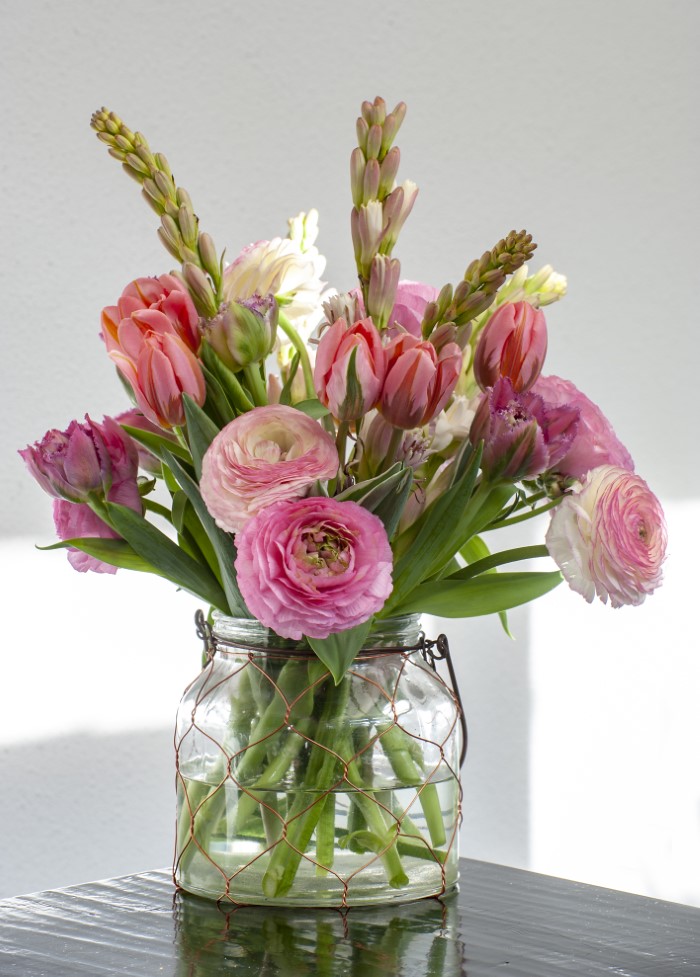
Ranunculus Bulbs
Commonly referred to as bulbs, ranunculus grows from corms. And boy, do they look strange! They resemble octopuses with tiny, scraggly, brown thick roots called claws.
Larger corms will hold more stored energy and produce a larger, stronger plant. Each corm produces several flower stems.
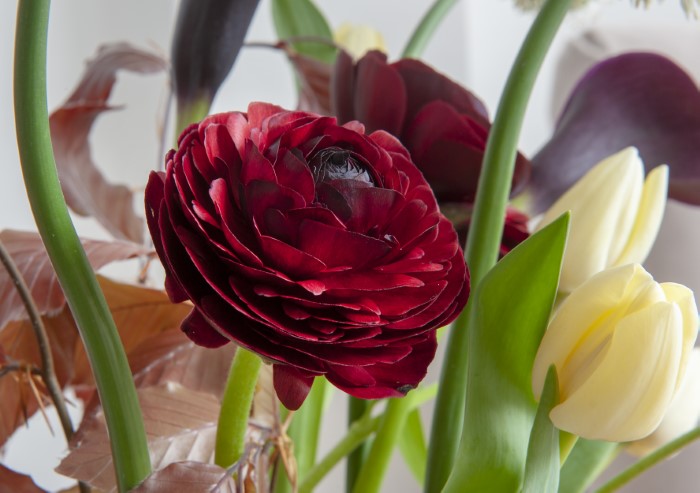
Ranunculus look like little peonies. They are easy to find at your local garden centre, as corms or already grown. Get the low down on ranunculus in the video below!

This video is part of the Random Gifts of Flowers project with Flowerbulbs.com. The video was made in partnership with Flowerbulbs.com but this post is not sponsored.
How to Plant Ranunculus Flowers
When to Plant Ranunculus
Depending on where you live, you can plant ranunculus corms either in the fall or spring. For those with mild winters, typically zones 8 and up, you can plant in fall with a little bit of protection such as frost cloth. When planted in fall, you will get longer-lasting, more abundant blooms come spring.
For colder winters, you will have to plant corms in the spring. You can start the corms indoors in late winter. They can be planted outside once the threat of a deep freeze has passed. This occurs approximately a month before the last frost.
Ranunculus will only grow back as perennials in zones 8-10. In all other zones, they are treated as annuals.
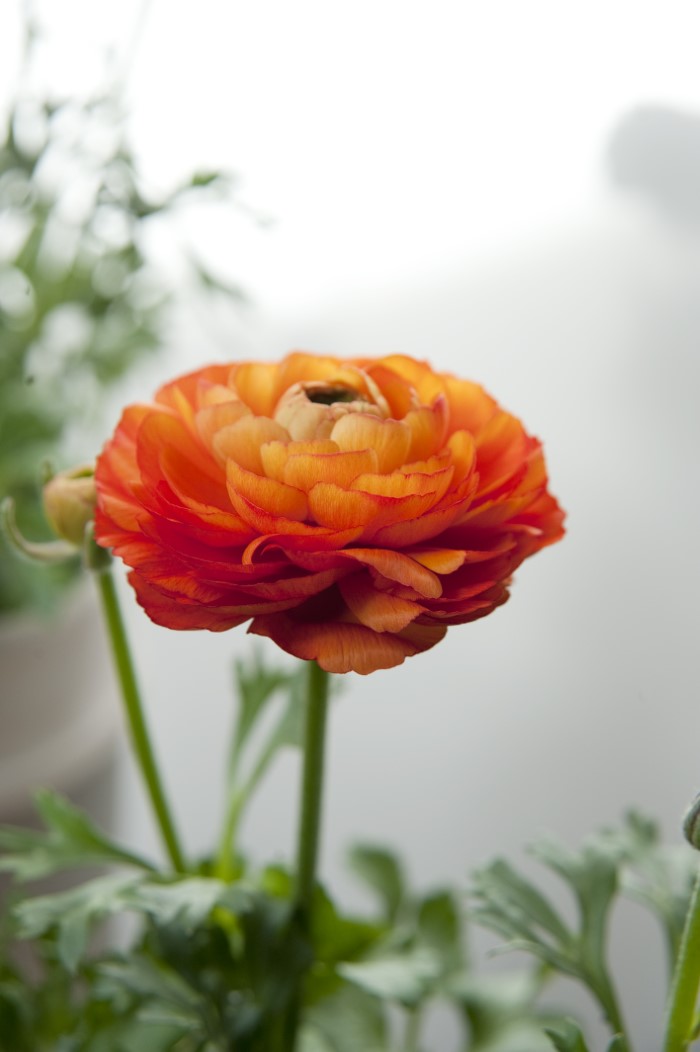
Before Planting
Corms are dried and small prior to being planted. To get them ready for planting, they need to be soaked first. Soak ranunculus corms for 3-4 hours (no longer). As they soak up all the water, they will double in size. You can plant them directly in the ground from this stage or you pre-sprout them.
Beginning Ranunculus Flowers Indoors
After soaking the corms, you can place them in a seed tray. Prepare the tray by filling it halfway with potting soil. Place the corms on the soil and then cover with more of it. Leave the tray in a cool place for 10-14 days. You will want to keep the soil moist but not soggy.
Check for roots by lifting them from the soil periodically. Once they have small, white roots that are 1/8 to 1/4 inch long, you can plant them outside.
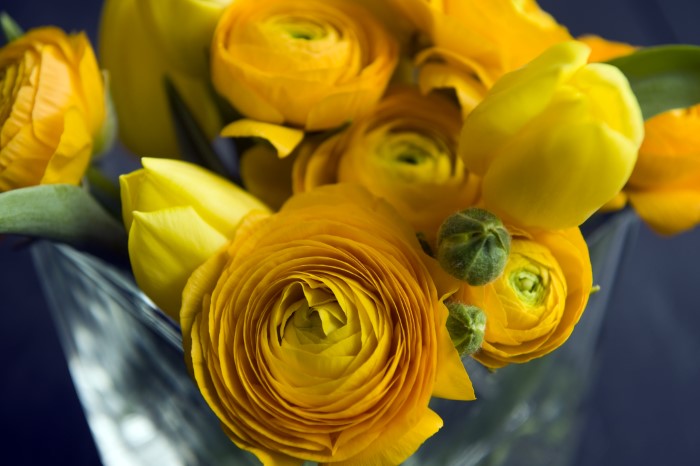
Planting Ranunculus
Ranunculus like lots of sun. While they don’t like the heat of the summer, they enjoy soaking up the spring sun as much as possible. Try to plant them in an area where they will get some afternoon sun.
To prepare soil, mix compost and fertilizer into the ground. Plant the corms 1-2 inches deep and at least 3 inches apart. Make sure the claws are pointed down. Ranunculus like well-draining soil as they are prone to rotting.
After planting, give ranunculus a good watering. You can also easily plant ranunculus in containers. In places with cold winters, this is a popular way of growing them. Keep in mind that ranunculus grow large root balls so make sure the container is large enough to hold it. The bigger the root ball, the bigger the plant!
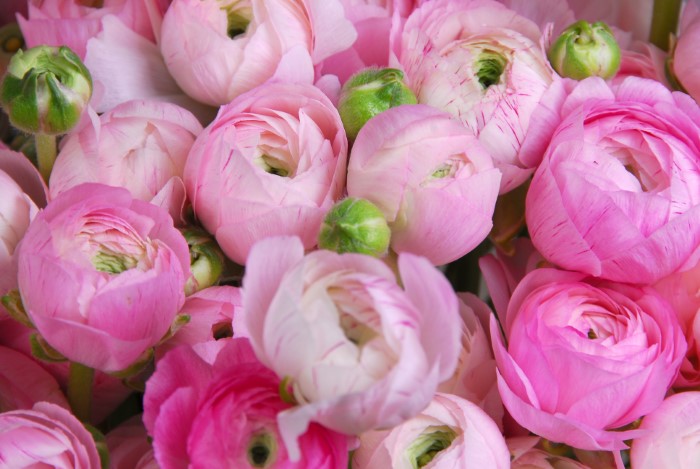
Ranunculus Care
Once you’ve planted ranunculus, be patient. You should have ranunculus flowers 90 days after you’ve planted the corms. When planted in the spring, they should flower at end of spring or the beginning of summer and last for 4-6 weeks. When planted in the fall, they will bloom in mid-spring and last for 6-7 weeks.
As ranunculus grow throughout the spring, consider using a frost cloth to protect the plants if it dips below freezing.
Ranunculus should be deadheaded. In spring and summer as the flowers begin to die and wilt, cut them right to the base. This will encourage more blooms.
What should you do with ranunculus after flowering? Once the plant has finished flowering completely, you can cut back ranunculus or dig out the root ball if you choose.
If you plan on trying to overwinter ranunculus in the ground, wait until fall to cut back the stems. When the top half of the plant has started to die, cut right to the crown of the plant. By allowing ranunculus to die back on its own, it will be able to store enough energy for the winter.
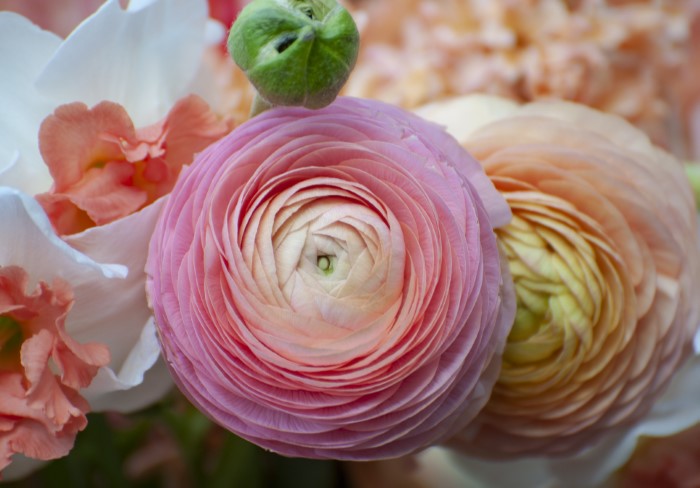
Ranunculus Flowers for Cutting
Take a peek at spring bridal bouquets and you will see how popular ranunculus are as cutting flowers. They can last for ten or more days in a vase!
The key to having ranunculus for a long time is to cut them properly. Cut them when they are still a bud and not fully open. When the buds have coloured and are still squishy like a marshmallow, they are ready.
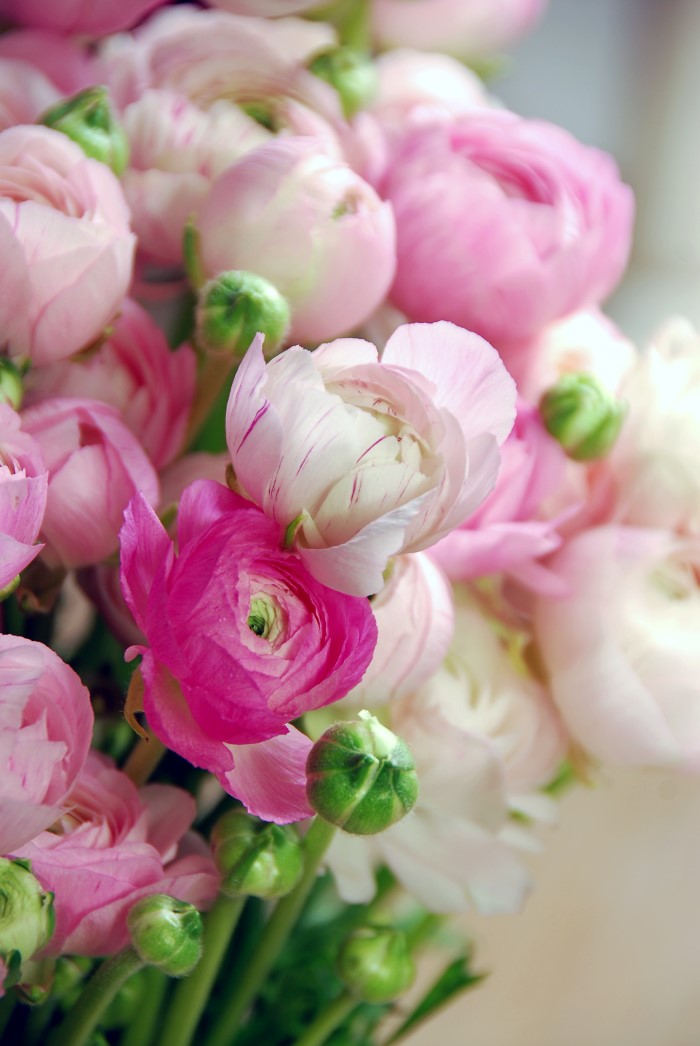
You want to cut them with sharp, sterile scissors to the base of the flower stem. If you cut ranunculus when they are open, they will last about seven days and will be harder to transport.
Bringing ranunculus indoors will revitalize the inside of the house when the nights are still chilly. Don’t hesitate to cut some flowers for a friend, neighbour, co-worker, or anyone you know who could use a smile.
If you plan on growing ranunculus, let me know in the comments down below! Don’t forget to use #RandomGiftsOfFlowers on social media if you grow your own ranunculus and gift it to brighten someone’s day.
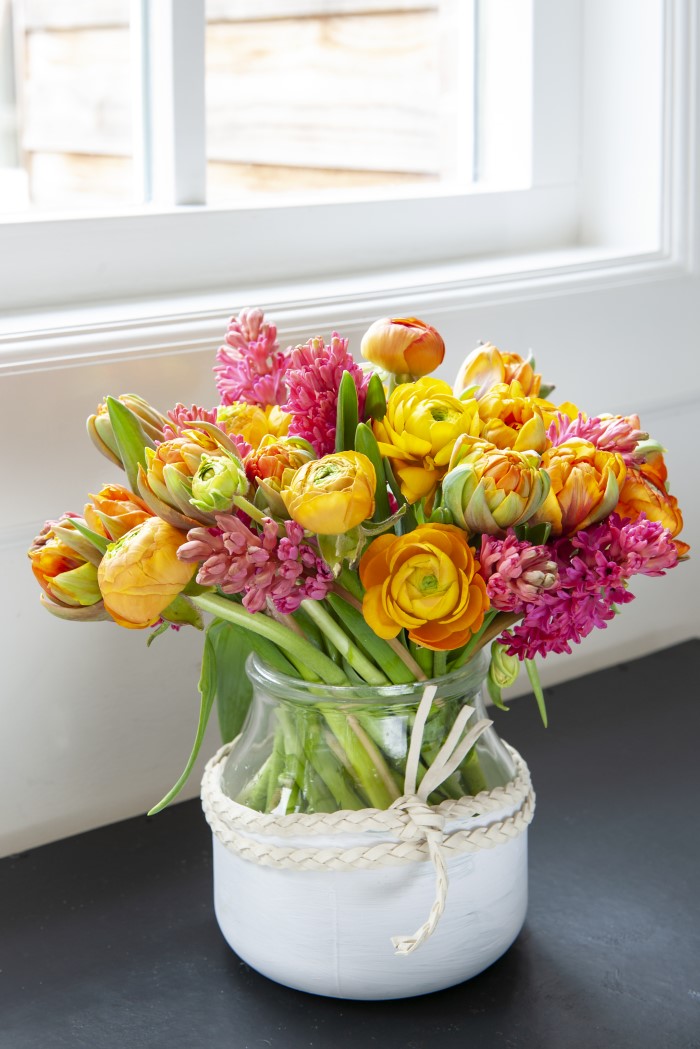

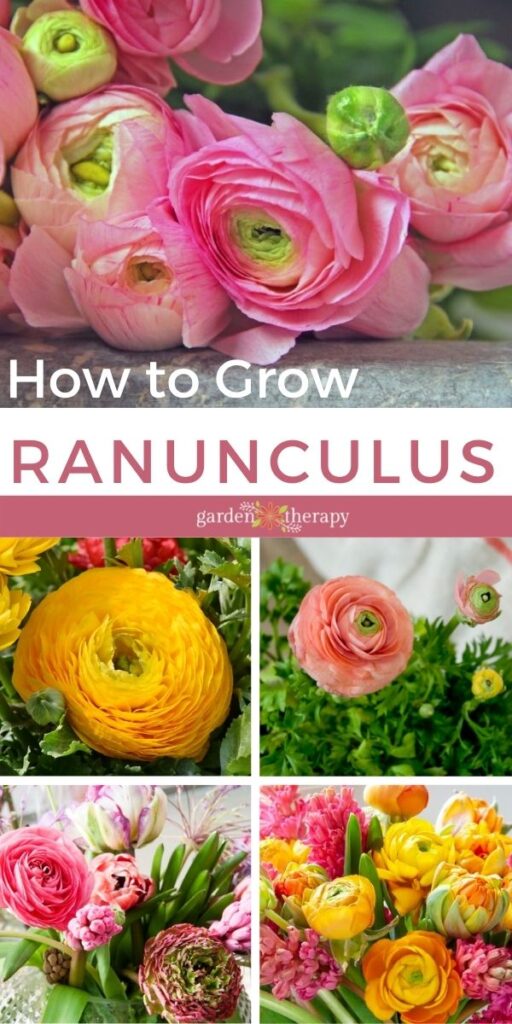



How do I over winter potted ranunculus plants in zone 5/6?
Here are some articles that will help: https://gardentherapy.ca/annual-flower-bulbs/ or https://gardentherapy.ca/how-to-store-bulbs-over-winter/